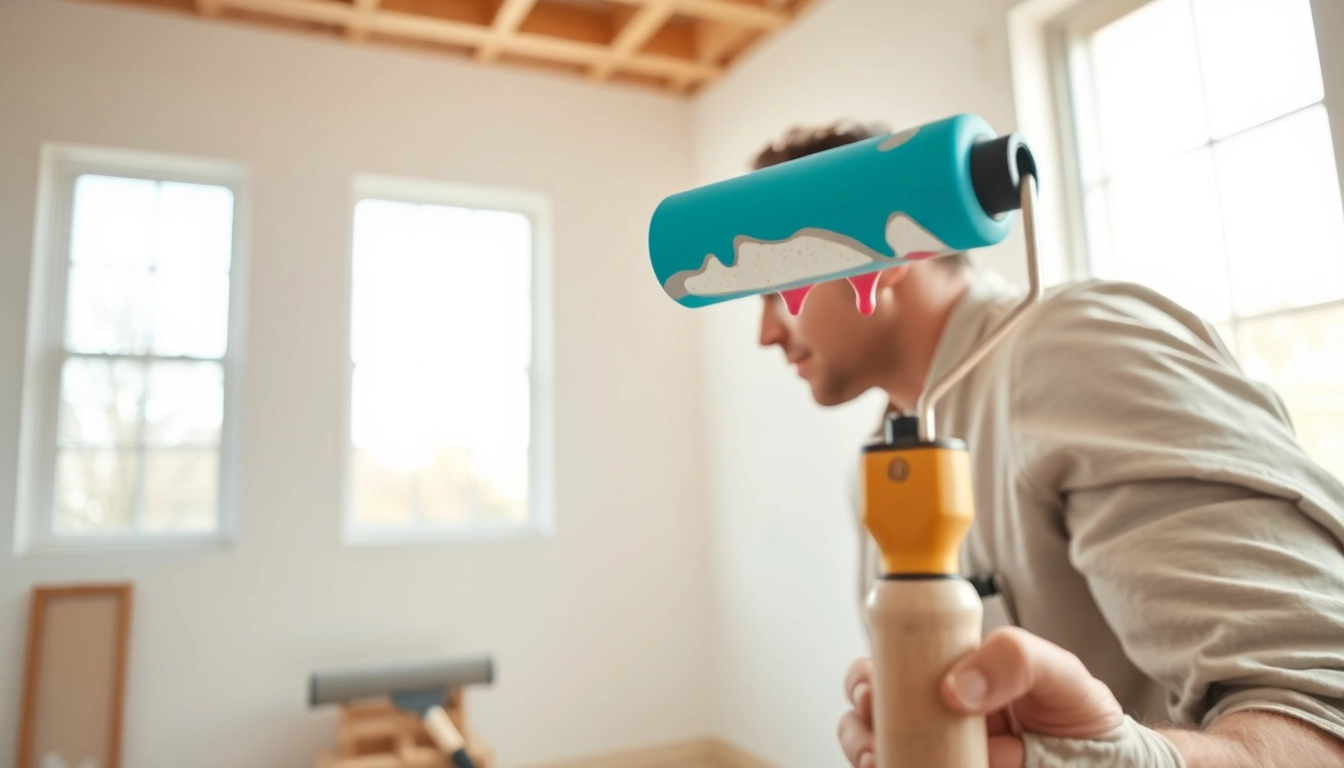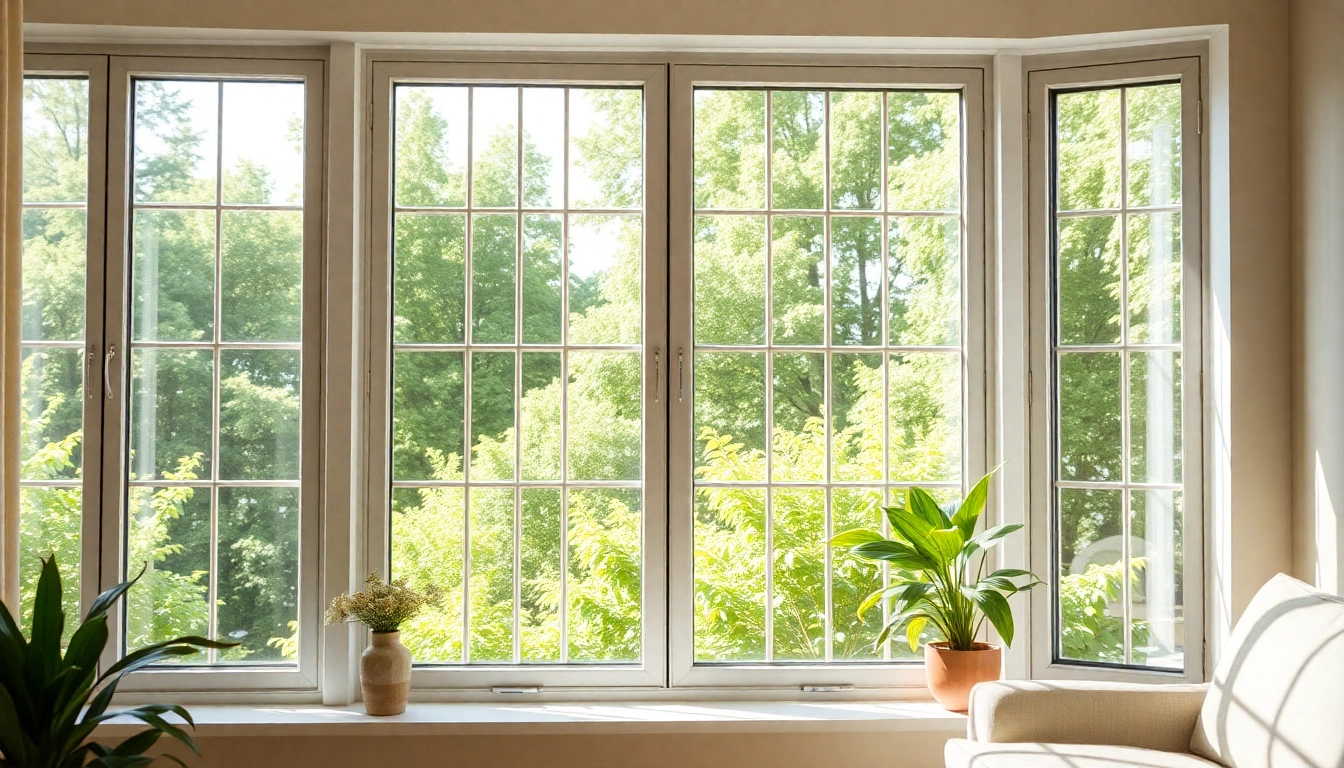Understanding the Basics of Drywall Painting
What is Drywall Painting?
Drywall painting entails the process of applying paint over drywall surfaces to enhance aesthetics and protect the underlying material. Drywall is made of gypsum plaster sandwiched between two layers of heavy paper, making it the preferred choice for interior walls and ceilings in most homes. While painting drywall can seem straightforward, it involves specific techniques and considerations to achieve a durable and visually appealing finish.
Essential Tools for Drywall Painting
To successfully execute a drywall painting project, having the right tools on hand is crucial. Here are the essential items you will need:
- Drop cloths: To protect floors and furniture from paint spills.
- Painter’s tape: For clean lines and to mask off areas that should not be painted.
- Sandpaper or sanding sponge: For smoothing rough seams and edges on the drywall.
- Primer: A necessary preparatory coat that assists in paint adhesion and coverage.
- Paint roller and tray: For applying broad strokes of paint on wall surfaces.
- Brushes: For edges and corners where a roller may not reach.
- Ladder: For accessing high walls and ceilings.
- Paint can opener: To easily open paint cans without spills.
- Stir sticks: For mixing paint thoroughly.
Preparation Steps Before Painting
Proper preparation is vital to achieving a slick and even finish. The following steps should be undertaken before the actual painting begins:
- Clean the surface: Use a damp cloth to clean the drywall and remove any dust or debris.
- Inspect for damage: Identify any dents, nicks, or holes on the drywall surface.
- Repair any imperfections: Fill in holes and dents with joint compound or a spackling paste, then sand the area smooth once dried.
- Prime the drywall: Apply a coat of primer, especially if using lighter paint colors. This step enhances paint adhesion and coverage.
The investment of time in preparation is what separates a mediocre paint job from a professional-looking finish, ensuring that your drywall painting looks its best.
Choosing the Right Paint for Your Drywall
The Importance of Primer in Drywall Painting
Primer plays a crucial role in drywall painting. It acts as a bonding agent between the drywall and the paint, sealing the porous surface to promote better paint adherence. Without it, the paint may soak into the drywall unevenly, leading to a blotchy appearance and possible peeling down the line. When painting over patchwork repairs, using a primer that matches the paint type is essential, ensuring uniformity in texture and color.
Types of Paint Suitable for Drywall
Choosing the right type of paint is paramount for achieving both durability and visual appeal. Here are the common types of paint used on drywall:
- Acrylic Paint: Water-based paints that dry quickly and are simple to clean with water. Ideal for interiors as they are less toxic.
- Latex Paint: Known for its ease of application and quick drying time. It’s resistant to fading and yellowing, making it a favored choice for residential spaces.
- Oil-Based Paint: Provides a smooth, durable finish suitable for high-traffic areas but has a longer drying time and requires solvents for cleanup. Best used in specific situations such as trim work.
Best Color Choices for Your Drywall
The color of paint you choose can greatly impact the overall mood and feel of any room. Here are some tips for making effective color choices:
- Light colors: These can help make small rooms appear larger and brighter.
- Pastels: Perfect for creating a soft, cozy atmosphere.
- Neutral tones: Such as whites, grays, and beiges, provide a versatile canvas that complements various decor styles.
- Accent colors: Can be used to create focal points in rooms—consider painting one wall a bolder color to add interest.
Techniques for Successful Drywall Painting
Step-by-Step Guide to Painting Drywall
Now that the groundwork is laid, here’s a step-by-step guide on how to paint your drywall effectively:
- Prepare the area: Lay down drop cloths to protect flooring and furniture and tape off areas to prevent accidental paint marks.
- Prime the drywall: Use a roller to apply the primer evenly and allow it to dry completely.
- Mix the paint: Thoroughly stir the paint to ensure consistent color and texture.
- Cut in edges: Use a brush to paint along the edges and corners before rolling the paint onto the rest of the wall.
- Roll on paint: Utilizing a paint roller, apply the paint in large, smooth strokes, working from top to bottom.
- Apply additional coats: Once the first coat dries, assess whether a second coat is necessary for the desired opacity and evenness.
- Clean up: Clean brushes, rollers, and any tools used and remove painter’s tape while the paint is still slightly wet for clean lines.
Common Mistakes to Avoid in Drywall Painting
Even seasoned painters can make errors. Here are common pitfalls to watch out for:
- Skipping primer: Always apply primer first to ensure a better paint job.
- Overloading the roller: This leads to excess dripping and an uneven coat—always remove excess paint before rolling.
- Painting in poor lighting: Insufficient light can create uneven patches; ensure your workspace is well-lit.
- Ignoring drying times: Rushing can lead to smudges and uneven texture due to insufficient drying.
Tips for an Even and Smooth Finish
For achieving a flawless finish, consider the following techniques:
- Sanding: Sand walls lightly between coats for an ultra-smooth appearance.
- Feathering: Blend edges from one area to another to avoid lap marks.
- High-quality tools: Invest in good brushes and rollers; they can drastically improve your paint application.
- Pace yourself: Work at a comfortable speed, allowing yourself ample time to cover the area adequately without missing spots.
Post-Painting Care for Drywall
When to Clean Your Painted Drywall
While painted drywall is generally durable, regular maintenance is essential to keep it looking fresh. Clean your walls when they appear dirty or stained. Using a soft cloth and a mild detergent mixed with water, gently wipe down the surface. Be sure to test any cleaning solution in a small area first to ensure it doesn’t damage the paint.
Repairing Damages on Painted Drywall
Over time, drywall can suffer from scratches, dents, or even holes. Here’s how to perform repairs:
- Small scratches: Can be touched up with paint using a fine brush.
- Dents and holes: Fill with spackling compound, let dry, then sand smooth.
Always ensure the repaired area is primed before repainting to avoid noticeable patches.
Preventive Measures to Maintain Your Paint
Keep your painted drywall looking new longer with these preventive measures:
- Periodic cleaning: Regular dusting and occasional washdowns will help maintain cleanliness.
- Avoid heavy impact: Install corner guards in high-traffic areas to prevent damage.
- Monitor humidity levels: Excessive moisture can lead to mold and deterioration of paint—ensure good ventilation.
Advanced Tips and Tricks for Drywall Painting
Using Textures to Enhance Wall Appearance
Textures can add dimension and visual interest to drywall. Techniques such as sponge painting, rag rolling, or using textured rollers can create unique effects. Practice these techniques on scrap material before applying them to your walls to achieve the desired look.
How to Paint Large Areas Efficiently
When painting expansive spaces, efficiency becomes essential. Here are methods to save time:
- Employ a paint sprayer: For massive walls, a sprayer can rapidly cover surfaces.
- Work in sections: Break the task into manageable areas, so it remains organized and less overwhelming.
- Utilize paint trays: These allow for easier access to paint when rolling large spaces, ensuring quick saturation of rollers.
Incorporating Accent Walls into Your Drywall Painting
Creating an accent wall can serve as a focal point in a room. Select a bold color different from the rest of the room to set it apart. For best results, follow these steps:
- Choose the right wall: Often the wall with a significant feature, such as a fireplace, works best.
- Prepare the area: Properly tape off adjacent walls for clean lines.
- Apply multiple coats: Depending on the color’s depth, you may need several layers for an even finish.



